![]()
|
|
|
|
|
Stoke-on-Trent - photo of the week |
Advert of the Week
Potworks of the Week
Mitchell Memorial - Youth
Centre, Hanley -
opened on 28 October 1957
|
The youth centre was built in Broad Street, Hanley on the site of The White House at a cost of £50,000. It was opened in October 1957 by Group- Captain Douglas Bader, to the memory of Reginald Mitchell. |
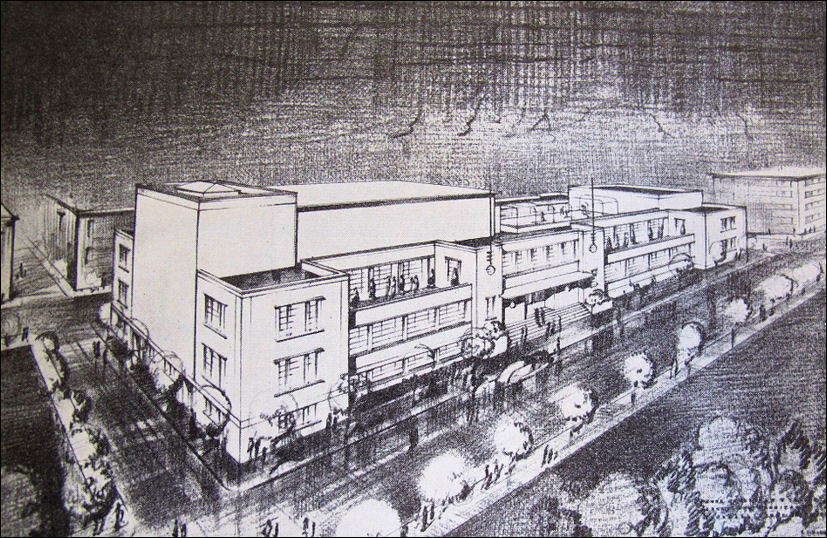
Original Architect's
Impression for the
City Youth Centre - to be called the Mitchell Memorial
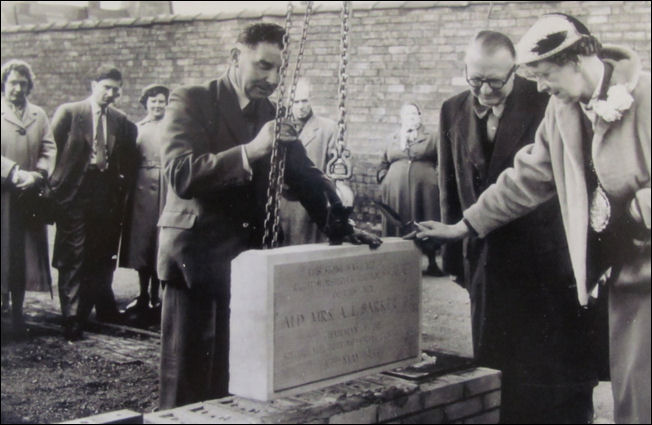
Lord Mayor, Alderman Annie
Longsdon Barker laying the foundation stone - 16th May 1955
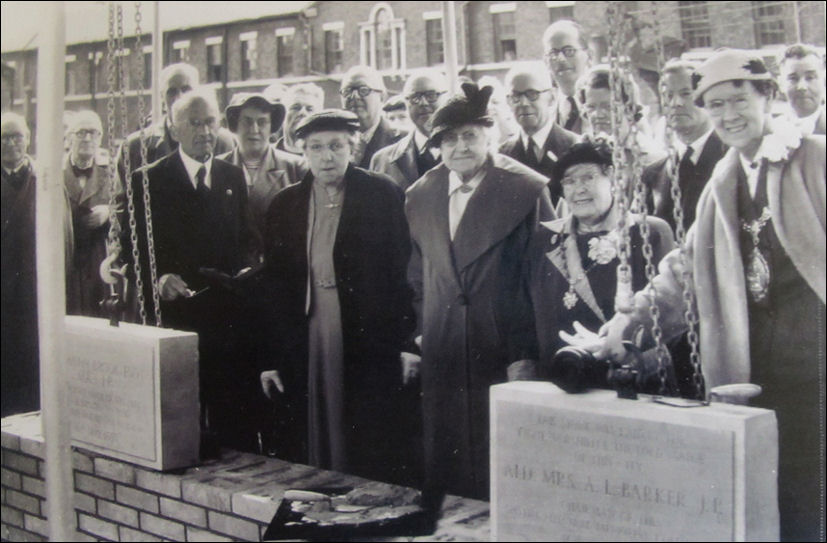
line up of dignatories
following the laying of the foundation stones
the pottery works in the background was Mason's Ironestone Works
- left to right (front row only) -
Charles Austin Brook, Mrs. Brook, unknown lady, Alderman Mrs. B.E. Meakin
(Lady Mayoress 1954-55), Alderman Mrs. Annie Longsdon Barker
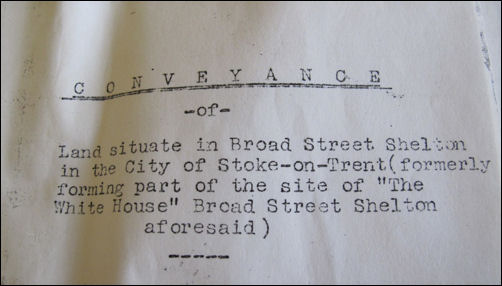
the land was conveyanced on
the 20th January 1952
by the
Trustees of the Spitfire Mitchell Memorial (Stoke-on-Trent) Fund
to the
Lord Mayor, Alderman and Citizens of the City of Stoke-on-Trent
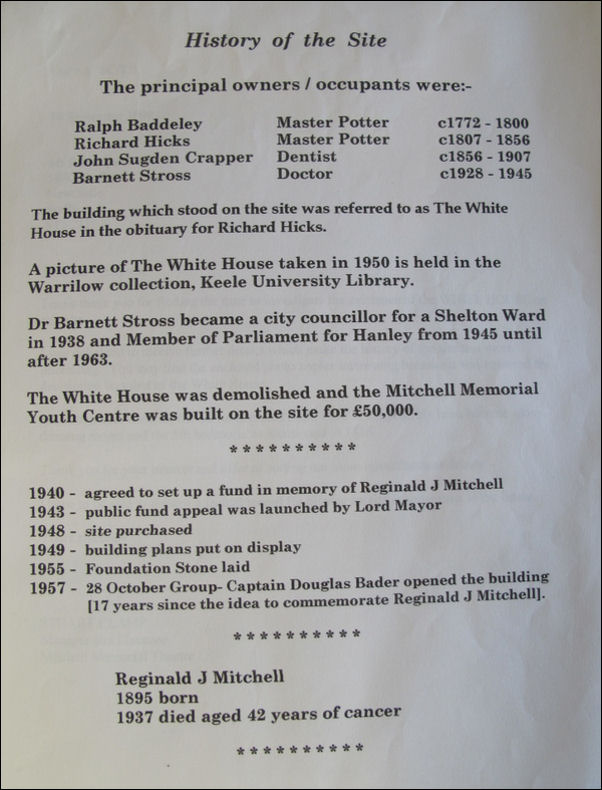
|
History of the Site The principal owners / occupants were:-
The building which stood on the site was referred to as The White House in the obituary for Richard Hicks. A picture of The White House taken in 1950 is held in the Warrilow collection, Keele University Library. Dr Barnett Stross became a city councillor for a Shelton Ward in 1938 and Member of Parliament for Hanley from 1945 until after 1963. The White House was demolished and the Mitchell Memorial Youth Centre was built on the site for £50,000. **********
**********
|
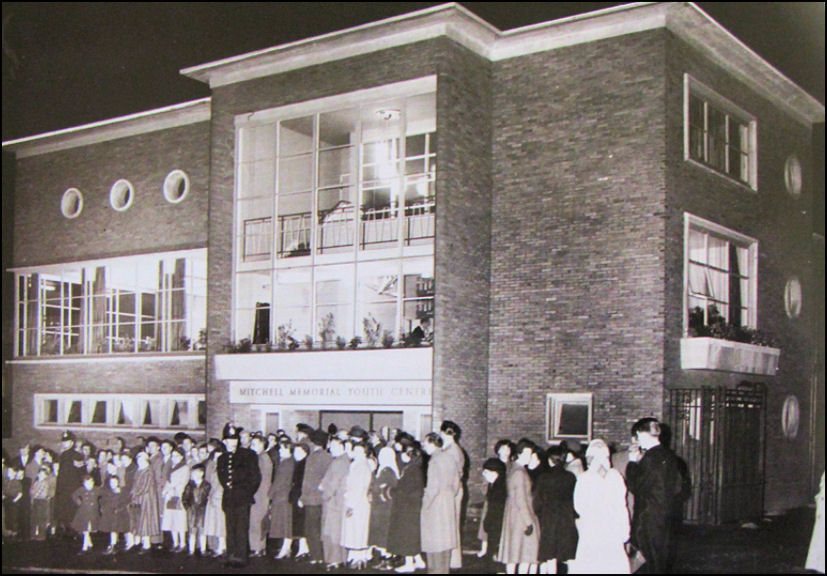
Mitchell Memorial Youth
Centre opening ceremony in 1957

Mitchell Memorial Youth
Centre in Feb 2008, shortly before closing for refurbishment

This building, erected by
Public Subscription,
commemorates R. J. Mitchell CBE AMICE FRAeS
1895 0 1937
a Son of this City
Designer of the 'Spitfire' Fighter Aircraft
used in the Battle of Britain, September 1940
opened on 28 October 1957
by
Group-Captain D.R.S. Bader
CBE DSO DFC
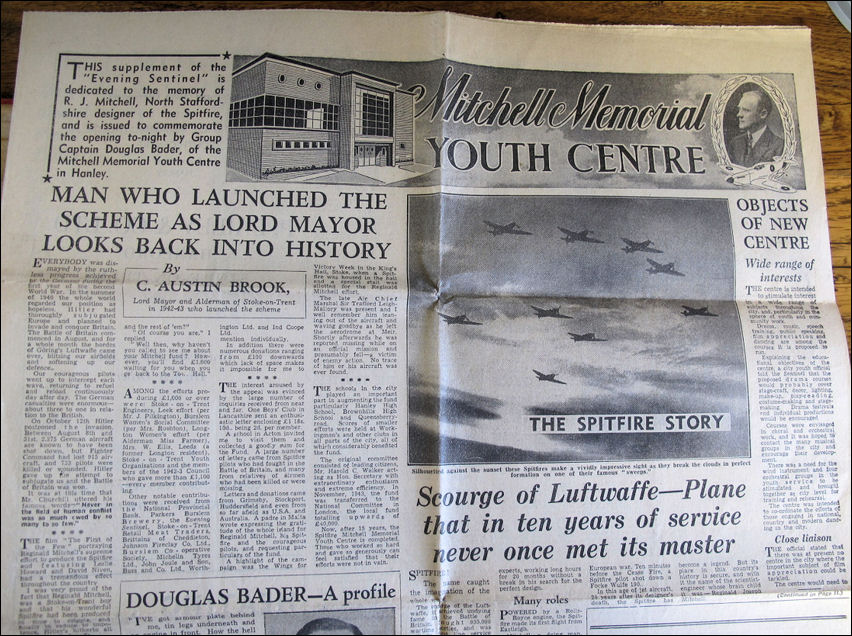
Evening Sentinel Supplement,
October 28th 1957

Mitchell Memorial Youth
Theatre
50th Anniversary
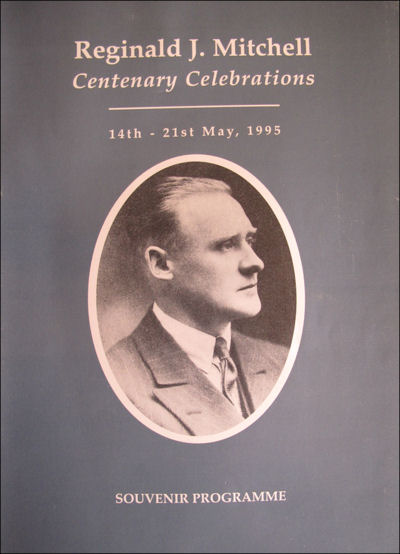
Reginald J. Mitchell -
Centenary Celebrations
14th -21st May, 1995
there was a Spitfire Flypast at 15.35 hrs. on Sunday 21st May 1995
| 1895 Reginald Joseph Mitchell was born on the 20th May at 115 Congleton Road, Butt Lane, Stoke-on-Trent. His father, Herbert, was a headmaster at Longton and, within a few months of Reginald's birth, moved to 87 Chaplin Road, Normacot, near Longton. The father soon gave up teaching, became a master printer, and eventually, Managing Director of a printing company. 1903 Reginald went to Queensberry Road Higher Elementary School at Normacot - the same year the Wright Brothers made their first successful areoplane flights (of under one minute duration). He then went to Hanley High School. 1911 When he was sixteen, he was apprenticed to the locomotive engineering firm, Kerr, Stewart and Co., Fenton, and attended evening classes at the Wedgwood Burslem Technical School in engineering drawing, mathematics and mechanics. He was awarded a special prize, one of three, presented by the Midland Counties Union. 1916 When his apprenticeship was completed, he made two attempts to join the armed forces but his engineering skills were considered to be more useful in civilian life. He undertook some part-time teaching at Fenton Technical School but his interest in flight was such that in 1917 he applied, suc¬cessfully, for the post of Personal Assistant to the Managing Director of the newly created Supermarine Aviation Works at Southampton. 1918 Within a year of his appointment he was promoted to Assistant Works Manager and felt financia able to marry Florence Dayson, headmistress of Dresden Infant's School. The wedding took place at Meir Church. 1919 A year later, Mitchell was appointed Cheif Designer (at the age of 24) and was also made Chief Engineer in the following year. 1922 He designed the Sea Lion II flying-boat which won the 1922 International Schneider Trophy competition and which also set world records for marine aircraft in duration, distance and speed (130 mph). 1924 In this year, he designed the very successful RAF standard marine reconnaissance aircraft, the Southampton. A total of 83 were built and formed the basis of Southampton's economic stability and prosperity for the next decade. 1928 In 1928 Vickers (Aviation) Limited acquired Supermarine but retained Mitchell and the entire design team he had built up around him. Mitchell was appointed a Director, as well as Chief Designer, of what had now become Supermarine Aviation Works (Vickers) Limited. 1929 Mitchell was elected Fellow of Royal Aeronautical Society and Associate Member of the Institute of Civil Engineers. These awards followed Supermarines success in the 1927 and 1929 Schneider Trophy competition. Two years later, the Supermarine aircraft won the Schneider Trophy for the third consecutive time and so Britain became the outright winner. The same machine also improved on the company's 1929 world absolute air speed record with a figure of 407.5 mph. 1932 Subsequent to the Schneider Trophy wins, Mitchell was awarded the CBE. His design team was also responsible for some very successful military designs at the time; orders for 17 Scapa flying-boats were followed by contracts for 58 Stranraers. 1933 Mitchell underwent an operation for cancer in 1933. Afterwards he took flying lessons and gained his pilots licence less than a year later. 1933 also saw the first flight of the prototype which became the Walrus; by the end of the Second World War, 746 had been built. 1936 The prototype of the Spitfire, for which Mitchell is best remembered, first flew on March 5th of this year and its chief designer had the satisfaction of seeing the largest initial order placed for any Supermarine aircraft - 310. However his developing illness did not allow him to see the aircraft go into squadron service and, in its various forms, eventually reach a total of nearly 23,000 built. He Died on June 11th 1937, aged 42. The Spitfires The prototype Spitfire flew from Eastleigh Airport, Southampton on 5th March 1936. So successful were the advanced areodynamics and construction techniques stemming from the Schneider Trophy racing aircraft, incorporated in the Spitfire's design by R. J. Mitchell, that developments the aircraft were to establish and maintain the air superiority so vital to the defence of the United Kingdom and ultimate victory throughout the war that followed. The first service ancratt was delivered to the Royal Air Force in August 1938 and, by the beginning of the Battle of Britain, 19 squadrons were equipped with Spitfires. Produced and developed at an unprecedented rate in shadow factories dispersed throughout the United Kingdom, the total number built exceeded 22,000 in 36 separate marks. Such was the vision of the designer and potential of the aircraft that it progressed from the prototype, weighing 5400 lbs with a 1050 horse power Merlin engine, to the Seafire Mk 47, weighing 12,500 lbs with a 2350 horse power Griffon. All this was accomplished in essentially the same airframe with relatively minor modifications. Truly a remarkable aeroplane which well deserves its place as the most famous and charismatic of all time.
|
|
related pages Mitchell Memorial - refurbished in 2011 Mitchell statue and the Spitfire Reginald Mitchell's Birthplace also see.. Advert
of the Week |